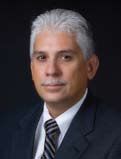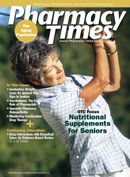Publication
Article
Pharmacy Times
News Caps

Roosevelt University recently announced the appointment of George E. MacKinnon III, PhD, RPh, FASHP, as founding dean of the new College of Pharmacy at the Schaumburg campus in Schaumburg, Illinois. Under MacKinnon’s leadership, the College of Pharmacy will offer an accelerated, 3-year Doctor of Pharmacy degree that is the first of its kind in Illinois and one of the few available in the country.
MacKinnon brings 20 years of experience as a pharmacy administrator and educator to his new position. He has previously served as vice president of academic affairs with the American Association of Colleges of Pharmacy in Alexandria, Virginia. MacKinnon has been involved in the establishment and accreditation of 2 other schools of pharmacy in Chicago, Illinois, and Phoenix, Arizona. MacKinnon also serves as a member of the Board of Advisors for Pharmacy Times.
MacKinnon received a BS and MS in hospital pharmacy from the University of Wisconsin-Madison and holds a PhD in educational leadership and policy studies from Loyola University Chicago. His personal research interests include documenting the impact, both clinical and economic, of interactions between pharmacists, patients, and other health care providers.

The National Institutes of Health (NIH) and researchers at Duquesne University have teamed up to engineer a drug that would block the actions of psychostimulant drugs including cocaine and amphetamines. Using an innovative, “rational design” drug discovery approach, a pharmacologist, a medicinal chemist, and a computational chemist at Duquesne have embarked on a multiyear project, funded through $2.4 million in NIH grants.
“We want a drug that interferes with cocaine action without being another cocaine,” said Christopher K. Surratt, PhD, division head of pharmaceutical sciences and associate professor of pharmacology at Duquesne.
The collaborative effort has the researchers seeking to discover how cocaine and amphetamines bind to the dopamine transporter at the cellular level. Using a computer-generated, 3-dimensional structure as a model of a dopamine transporter, they will use “virtual screening” of millions of compounds to determine which seem to hold the most promise. From there, the chosen compounds will be tested in a lab, with the possibility of new compounds being synthesized.
Through their innovative process, the researchers are able to avoid the costs of trial and error in drug discovery. The design approach also allows the researchers to hone in on compounds that would be most promising in the fight against cocaine and amphetamine abuse.
Hospital Patients Could Prevent Med Errors
A small survey conducted by Ethan Cumbler, MD, of the University of Denver and colleagues found that hospital patients make significant errors when listing their own medications. Published in the December 10, 2009, issue of the Journal of Hospital Medicine, the report highlights the fact that uninformed patients open the door for possibly devastating medication errors.
The survey of 50 adults between the ages of 21 and 89 required patients to compile a list of outpatient scheduled medications, as needed (PRN) medications, and medications they believed they were receiving in the hospital.
Incredibly, 96% of participants omitted 1 or more hospital medications from their list. Antibiotics, cardiovascular medicines, and antithrombotics were the most commonly forgotten scheduled medications, whereas analgesics and gastrointestinal medications were the most often omitted PRN medications. Forty-four percent of patients listed a medication that they never received. Cumbler and colleagues note that, although 78% of those surveyed were in favor of receiving a list of their hospital medications, only 28% of patients saw a list. If patients become proactive in educating themselves, the authors suggest, they can serve as a last line of defense in preventing hospital medication errors.
No Reason to Wait for Readily Available H1N1 Vaccine
The Centers for Disease Control and Prevention (CDC) estimates that 60 million Americans have already been vaccinated against pandemic H1N1 flu. Anne Schuachat, MD, of the CDC, used data from her agency and independent research by Howard University to compile the estimate. The fact that the H1N1 vaccine shortage has eased is helping the vaccination effort, with nearly 100 million more doses becoming available throughout December 2009.
Health and Human Services Secretary Kathleen Sebelius urged all Americans to get vaccinated and noted that the new supplies of vaccine could prevent a third wave of the illness, which some experts predict could occur in January or February. “We finally have enough vaccine that for most of you, it’s your turn,” Sebelius said. Pharmacists should expect patients to heed that advice, and prepare for an influx of vaccination seekers in the coming weeks.

US Army and ASHP Team Up for Patient Safety Program
The US Army has launched a new 12-month program designed to give a selected Army pharmacy officer the opportunity to get training and hands-on experience on ways to make the medication-use system safer and more effective for patients. Lieutenant Colonel Eric M. Maroyka, PharmD, BCPS, has joined the American Society of Health- System Pharmacists (ASHP) as an officer-in-residence and will be located in the ASHP Office of Policy, Planning and Communications in Bethesda, Maryland.
The purpose of the program is to team up colleagues in the military and ASHP to work together to improve patient safety. Lt Col Maroyka will work on projects and initiatives related to improving the safety and quality of the medication-use process in both hospitals and health systems. He has worked as an Army pharmacist since 1992 in the United States and abroad, including Heidelberg, Germany, and Baghdad, Iraq. “Lt Col Maroyka is a valuable addition to ASHP, as we work together to improve patient safety,” said Henri R. Manasse Jr, PhD, ScD, ASHP executive vice president and chief executive officer. For more information on the ASHP, visit www.ashp.org and its consumer Web site, www.safemedication.com.

Importation of Prescription Drugs Voted Down in Senate
US senators recently voted to reject 2 proposals that would have allowed Americans to purchase cheaper prescription drugs from other countries. The first proposal, which was backed by a bipartisan group of more than 24 senators who wanted to allow drug imports from Canada and other countries, was defeated in the Senate by a vote of 51-48 (60 votes were necessary to pass the proposal in the Senate).
In addition, another proposal to allow imports that have been certified as safe by US health officials lost by a vote of 56-43 (again, 60 votes were required to pass).
Both measures were proposed under the sweeping Democratic legislation to repair the $2.5-trillion US health care system. Consumer advocacy groups, like AARP, were disappointed by the Senate’s rejection, because they feel drug importation would greatly reduce the cost of treatments. The Pharmaceutical Research and Manufacturers of America (PhRMA) welcomed the outcome, however. PhRMA’s Senior Vice President Ken Johnson stated that if expanded health care coverage is implemented, “prescription drug importation [will not be] necessary because most Americans will finally have health insurance and access to safe and secure prescription medicines.” The National Association of Chain Drug Stores was also in favor of the Senate’s rejection, and said in a statement, “NACDS supports the goal of reducing prescription drug costs; however, NACDS believes importation would put patients’ and consumers’ health and safety at risk, minimize the role of pharmacists in the dispensing of medication and counseling of patients, and adversely disrupt patient care and service.”
Studies on EMRs Underscore Privacy Concerns
Electronic medical records (EMRs) have reached the national stage as health care reform discussions focus on how to streamline patient care and save costs. Although there is general support for the use of EMRs, 2 new studies published in the January 2010 issue of the Journal of the American Medical Informatics Association reveal real concerns about privacy problems.
One study surveyed more than 1000 family practice and specialist doctors in Massachusetts. Eighty-six percent of respondents believed that electronic health information exchange would improve patient quality of care, 70% thought it would reduce costs, and 76% said it would save time. Fifty-five percent were “somewhat concerned,” however, about privacy being breached, with 16% “very concerned” about that possibility.
Another survey showed that health care professionals, including psychiatrists, nurses, and therapists, believed that EMRs were more complete than paper records, but not necessarily more factual. Additionally, 63% said they were less willing to put highly confidential information in an EMR. A total of 83% said they would not want their own mental health records routinely accessed by other health care providers.
A third perspective comes from England, where researchers at the University College of London (UCL) recently found that 50% to 80% of EMR projects are unsuccessful outside of a controlled testing environment. A greater likelihood of success existed with smaller, local systems, particularly with billing, but clinical work can be made less efficient by current EMRs. According to coauthor Henry Potts, PhD, from UCL’s Center for Health Informatics and Multiprofessional Education, “We believe the next generation of research [on EMRs] should focus on how human imagination, flexibility, and collaboration can work with electronic systems and help overcome their inherent limitations.” â–







